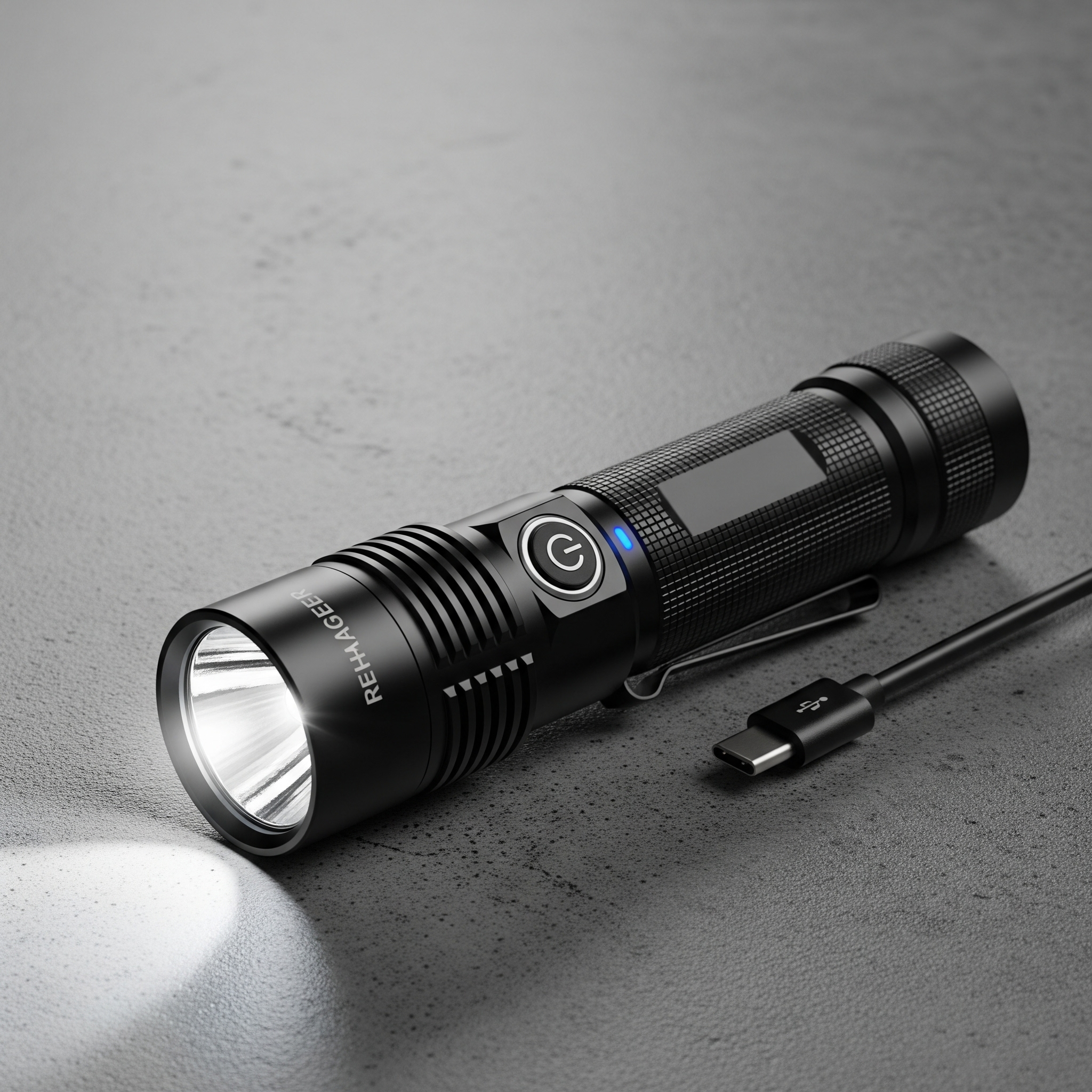Rechargeable Flashlights vs. Battery-Powered: Which is Better for You?
Posted by Raymond on 11th Aug 2025
When choosing a flashlight, one of the first decisions you’ll face is whether to go rechargeable or battery-powered. Both types have unique advantages and disadvantages, and the right choice depends on your usage, budget, and convenience needs.
This guide compares the two options in terms of cost, performance, maintenance, and environmental impact so you can make an informed decision.

1. What Are Rechargeable Flashlights?
Rechargeable flashlights use built-in lithium-ion or NiMH batteries that can be recharged via USB, magnetic chargers, or docking stations. They are popular among professionals, outdoor enthusiasts, and everyday users who value long-term cost savings and convenience.
Pros of Rechargeable Flashlights:
-
Lower long-term cost
-
Eco-friendly (reduces disposable battery waste)
-
Often more powerful with consistent brightness
-
Convenient charging options (USB, car adapter, solar)
Cons:
-
Higher upfront price
-
Requires charging infrastructure
-
Limited runtime if power source is unavailable
2. What Are Battery-Powered Flashlights?
Battery-powered flashlights rely on replaceable alkaline or lithium batteries (AA, AAA, CR123A, etc.). They are ideal for emergency kits and remote use where charging isn’t an option.
Pros of Battery-Powered Flashlights:
-
Lower initial cost
-
Easy to find replacement batteries
-
Great for long-term storage (no self-discharge)
-
Reliable in off-grid and emergency situations
Cons:
-
Higher ongoing cost due to battery replacement
-
Disposable batteries create environmental waste
-
Brightness may drop as batteries drain
3. Side-by-Side Comparison
| Feature | Rechargeable Flashlight | Battery-Powered Flashlight |
|---|---|---|
| Initial Cost | Higher | Lower |
| Long-Term Cost | Lower (no regular battery purchases) | Higher (frequent battery replacement) |
| Brightness Consistency | High, stable output | Can dim as batteries drain |
| Eco-Friendliness | Very eco-friendly | Produces battery waste |
| Portability in Remote Areas | Needs charging access | Works anywhere with spare batteries |
| Maintenance | Charge periodically | Replace batteries as needed |
| Best Use Cases | Daily use, professional work, camping | Emergency kits, remote travel, backup use |
4. Which One Should You Choose?
-
Choose Rechargeable if you use your flashlight often, want long-term savings, and have easy access to charging. Great for law enforcement, camping, and everyday carry.
-
Choose Battery-Powered if you need a backup light for emergencies, are traveling to remote areas, or want a flashlight that works after long storage without charging.
For a balanced approach, some users keep both types—a rechargeable as the main light and a battery-powered as a backup.
5. Additional Tips for Flashlight Buyers
-
Check the lumen rating for brightness.
-
Look for IPX water-resistance ratings for outdoor use.
-
Consider beam type (spot, flood, or adjustable).
-
Choose a brand with good warranty support.
For more technical details on flashlight specifications, you can visit Flashlight Enthusiast Forums for in-depth user reviews.
